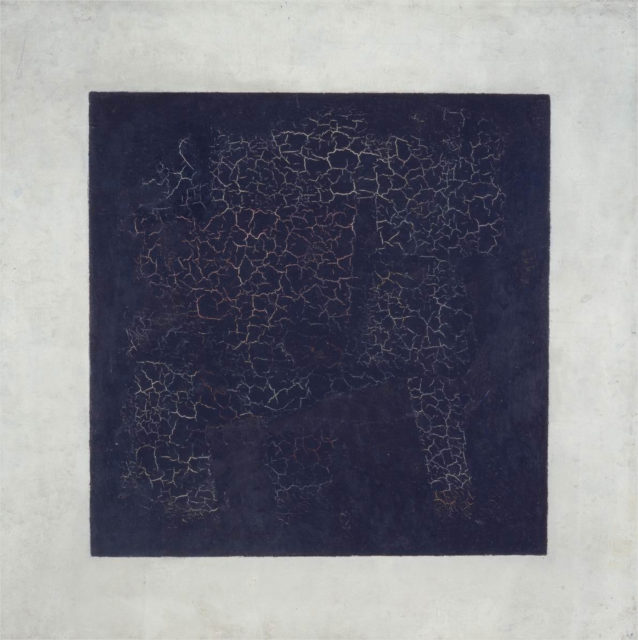
I have been actively interested in art criticism and art history for the past couple of years, though I can’t say that I have gone very far into the deep end on those topics. So I will keep this short and surface-level.
Kazimir Malevich is famous for painting The Black Square, which he called an end and a beginning. The painting marked the end of "every attempt to feebly imitate the world of nature. There would be no copying any more, no more representation. It would be the beginning of an art which would be entirely self-sustaining."[Glover, 2014 ]
The appeal of abstract art is in this rejection of representation, of imitation. To rebel against the notion that realism contains valuable truths which are not inherently counterfeit. It is born of the spirit of revolt and in turn inspires revolt.
But revolt is not the endgame for abstract art. Pure personal expression is the lofty goal. Jackson Pollock said:
"The modern artist is working with space and time, and expressing his feelings rather than illustrating."
Modern art starts with the Impressionists precisely for this reason. What’s more, the Impressionists started from a kind of rebellion as well (their art became popular for its display in the Salon des Refusés).
Questioning the efficacy of abstraction in the above-linked article, Glover poses this question:
"…what exactly is it that we are supposed to be looking at, and can this ever-elusive something really hope to sustain us to the depths of our emotional natures?"
I think Albert Camus might have something of a reply. From The Stranger, where Meursault begins to learn to live in his prison cell (emphasis mine):
"Eventually, once I learned how to remember things, I wasn’t bored at all. Sometimes I would get to thinking about my room and in my imagination I would start at one corner and circle the room, mentally noting everything there was on the way. At first it didn’t take long. But every time I started over, it took a little longer. I would remember every piece of furniture; and on every piece of furniture, every object; and of every object, all the details, and of the details themselves–a flake, a crack, or a chipped edge–the color and the texture…And the more I thought about it, the more I dug out of my memory things I had overlooked or forgotten. I realized then that a man who had lived only for a day could easily live for a hundred years in prison."
Meursault’s exercise of finding all of the details, and all of the qualities of all the details within his prison cell is directly comparable to the process of abstraction in the context of artistic expression. With each successive ‘pass’, the prison cell (the world) looks less like its surface/macro representation. With each pass, new details are discovered, their importance elevated. At a certain depth of observation, the prison (the world) becomes unrecognizable; it is abstracted.
Side note: Camus’ corollary to Meursault’s exercise is in his essay The Myth of Sisyphus, in the section entitled Absurd Freedom, where ‘life experiences’ are analogous to the details that Meursault finds in his cell.
My essential argument is that the formal qualities that abstract art emphasizes, and which (for its non-representational quality) are more sure to be of a personal rather than worldly nature, can have infinite depth. But only if we are willing to dive.
Or perhaps I am wrong and there is a kind of cruel irony in the slow decay of Malevich’s The Black Square, the paint tessellating over time to resemble the Salt Flats of Death Valley. That even for the alpha and omega of abstract paintings, Nature still finds a way to become represented.